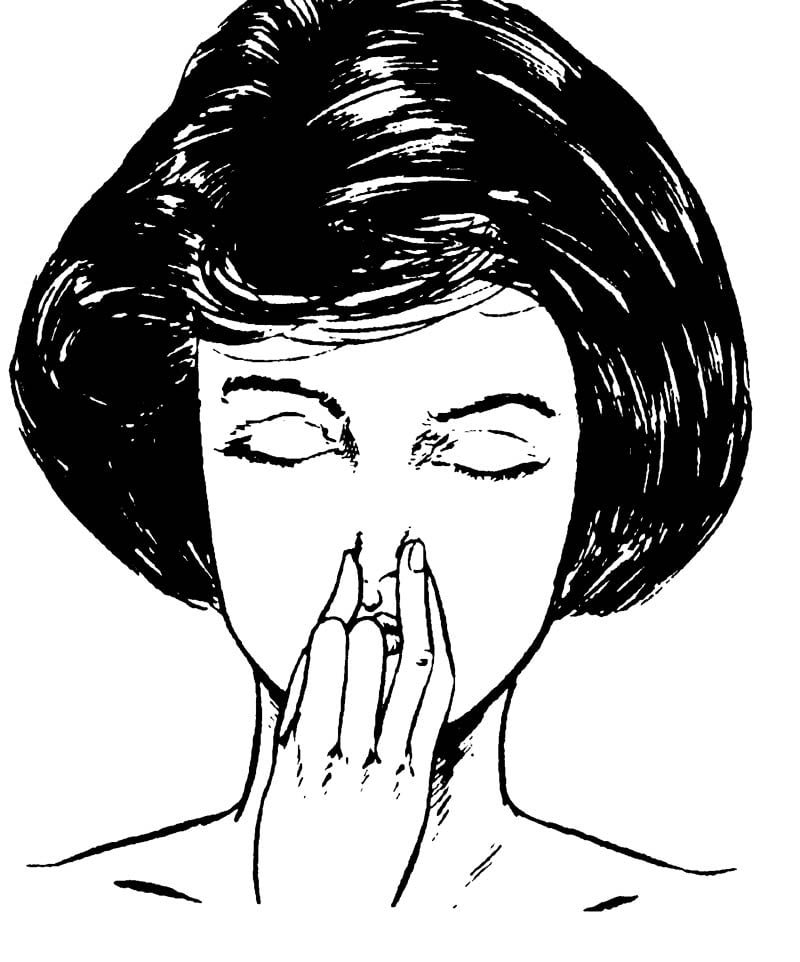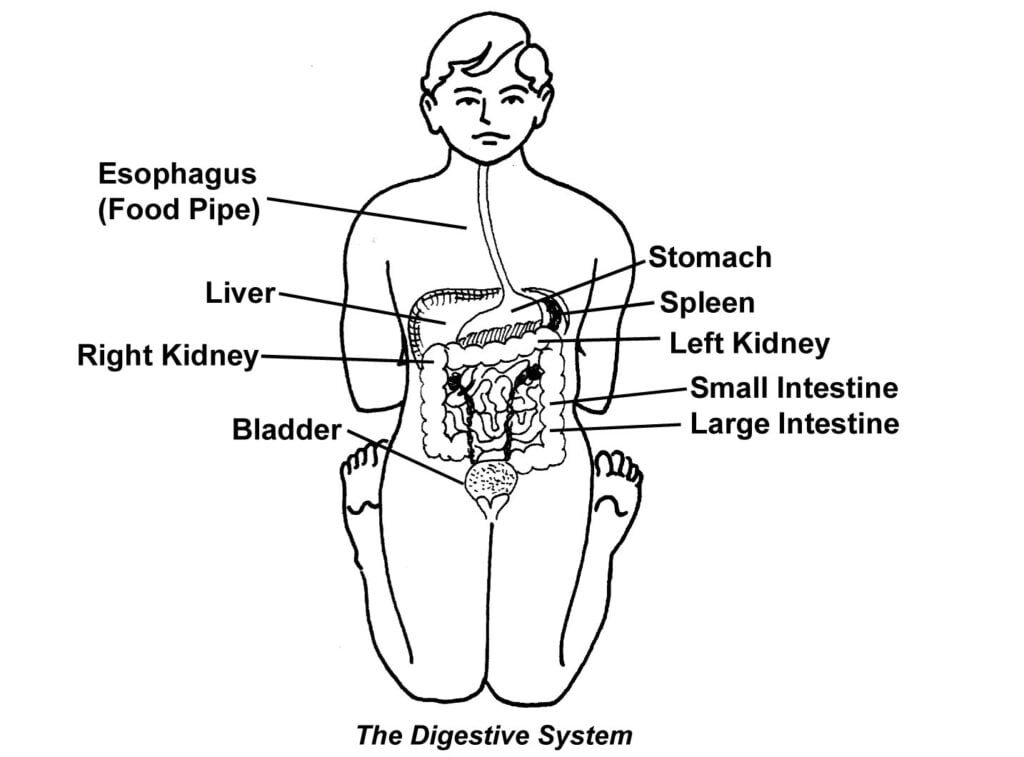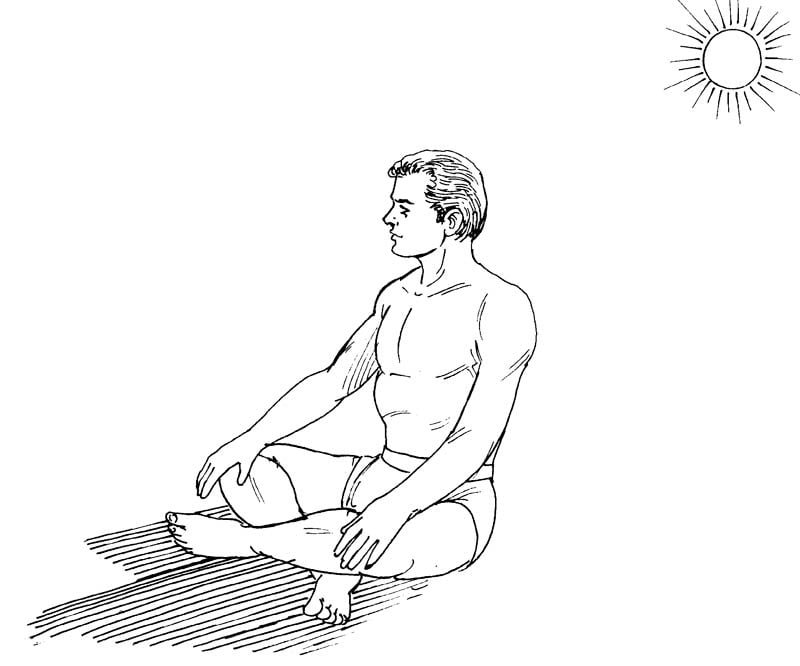Of all the complementary or alternate therapies yoga is the most cost effective, holistic, curative, hassle-free and easy-to-perform. It not only purifies body, mind and intellect but, apart from that, it strives to improve digestive, respiratory, cardiac and circulatory, endocrine glands functioning, mobility and sleeplessness of joints and muscles, renders body slim and trim by helping it to shed extra fat from the body, activates sebaceous glands to keep the skin glazed and sparkling, improves health of ovaries, controls senses. I have mentioned only some of the benefits.
Yogasanas are not aerobic or physical exercises, or work-up for sportsmen and athletes, but much more than that. There is hardly any mental and physical disorder (Dosha or Roga) which it cannot cure, of course it has to be coupled with Pranayama Kriyas to derive optimum and near complete mileage. Readers are advised to go through the following points carefully so that no room is left for confusion.
Yoga and Food
Yoga lays great stress on pure non-irritant, spice free, anti-toxicant, and fresh seasonal vegetable and fruits. Hence, pure vegetarian diet is an integral part of this unique system. Try to avoid fried, saucy, spicy, fat-enriched diet which interferes not only with normal functioning of body organs but also disturbs our mental faculties, thinking, secretions from endocrine glands—in a way all these factors are health hazards. It has been rightly said that ‘we are what we eat’ which clearly implies that our food patterns and dietary habits not only govern our body but also our thinking process. When our body is ailing, mind is bound to get disturbed, as healthy mind stays only in a healthy body and, in order to keep our body in a healthy state, our diet must be ‘Satvik’. For instance, if a person consumes much of spicy and fat-enriched food, alcohol, tobacco, drugs, his digestive system is bound to get disturbed, resulting in many digestion related disorders.

Yoga and Mind
Mind is the driving force of all our actions. If mind is vitiated, polluted and disturbed, our endocrine glands won’t function normally—there will be lesser or more secretion from such glands which will adversely affect our body chemistry. Yoga strives to pacify agitated mental process, thereby imparting it peace, tranquillity and satiation. Yogic postures assist the brain to put in better performance, by nurturing its nerves with the requisite blood supply to sustain and fortify its various activities. Mind is an abstract form of brain and whatever thoughts arise therein are expressed by emotions, sensations, physical actions/reactions.
Yoga and Pranayama
Pranayama means suspension or withholding of breath or regulation of breath through inhalation, suspension (withholding) and exhalation, and these three phases are part and parcel of all the yogic postures (Asanas). There is life as long as we breath and death ensues only when last breath comes out of our body. If one is able to retain breath, the time saved through retention, adds to longevity of life. Prana is nothing other than breath, hence in order to add to years, one must learn how to preserve expense of breath.


Yogasanas are designed in such a way that entire body’s functions get normalised, breathing process regulated, quality of life improved and general well-being of body, mind and intellect ensured. A person who practises yogasanas and Pranayama with punctual regularity can be rest assured to lead a healthy, physical and mental life. All asanas cannot and must not be performed by all, due to variable disorders and an individual’s physical capacity, but Pranayama can be practised by all persons, irrespective of age, sex and physical condition.
Multiple benefits of Yogasanas
Asanas have multiple benefits, as detailed hereunder :
- With certain safeguards and cautions, all men, women and children can perform asanas, depending upon an individual’s age, health status or particular diseases from which a person is suffering.
- They are easy, cost-effective, preventive, corrective and curative of almost all the disorders, mental or physical or both, and no extra material is required to perform them.
- They help in muscle and tissue build-up and repair thereof, apart from calming down agitated nerves, dispelling fatigue, making up for the lost energy. They help to keep body and mind in good humours.
- They energise the endocrine glands so that the body receives requisite sections which are vital and necessary for proper functioning of the body.
- Digestive system is rejuvenated, appetite improved, digestion related diseases are cured.
- It is the best method to keep and sustain flexibility of the spine and remove curvature, if any. In addition, it also rectifies posture-related diseases like back pain, shoulder pain, cervical spondylosis, lumbar spondylosis, joint pains, stiffness of joints etc.
- Asanas help to reduce weight, by naturally shedding extra flesh from the body.
- Asanas sharpen intellect, enhance memory and agility, provide suppleness and strength to mind, enabling it to concentrate/meditate. All the mental faculties and systems get renewed energy, vigour. Higher values of mind are also aroused.
- They tone up the body, from top to bottom, regulate respiration, control cardiac, pulmonary, urinary and digestive systems in such a perfect way that hardly any room is left for malfunctioning. They also purify and regulate circulation of blood, by fortifying lungs and heart.
- Each and every organ of the body is recharged and activated. Nervous system is toned up and diseases like hypertension, cardiac complications, mental tensions, stress, anger, agitation, approach to life are dispelled. In a way, where other therapies miserly fail and raise their hand up in digest and despair, yoga solves them in the shortest time and, above all, the sufferer feels relieved without any trace of side-effects.
- Those who practise the asanas regularly, improve their eyesight and, in certain cases, one may give up the use of spects even or else his number may, at least, fall.
- Skin becomes soft , glossy, tender and strong enough to withstand thermic changes. Sudden weather changes have no or very little impact on the practice of Asanas.
- Facial wrinkles vanish, complexion, improves, signs of old age disappear and one feels to have gained a renewed vigour, vitality and glow. Rigid joints attain flexibility and mobility, especially flexibility of spine, which is necessary to retain and sustain youth. An old man even attains innocence and agility of a child.
- Asanas provide immunity against diseases, and also arouse prophylaxis.
- Other systems merely aim at toning up the body whereas yogasanas provide multifold benefits due to the fact that there are specific asanas for each and every disorder, whether physical or mental.
Importance of Yogic exercises as compared to other games/exercises
Yogic exercises are very good for the internal organs of the body; like liver, pancreas, intestines, lungs, heart, kidneys, spine and joints etc. In other exercises—the internal organs are not exercised upto that level, as in yogic exercises.

In yoga the muscles are relaxed, heart beats are in perfect rhythm and the mind calm and peaceful as there is no competition while performing yoga, where as in sports, there is anxiety and stress due to competition.
Yoga can be discontinued due to illness or certain other reasons with no side effects or weight gain, where as if games/other exercises are discontinued, there are chances of weight gain and lethargy.
Know about Precautions
- These exercises should not be performed by severely ill persons or who are bed ridden or suffering from acute slip disc pain or having a fracture.
- Females during pregnancy and menstruation should avoid and if required, perform only under supervision of an experienced yoga teacher.
- Children below the age of five years should not perform Yogic exercises, as there internal organs are very tender.
- If you are suffering from chronic ailments like arthritis, migraine, diabetes, renal failure, slip disc, cirrhosis of liver etc., perform these exercises only under supervision of a good yoga teacher.
- If you feel any pain during a particular exercise, stop doing that.
- If you feel exhausted, do ‘Shavasana’ at once, as this asana can be performed after any asana. Otherwise this particular asana is advised to be performed in last.
Factors necessary for Performance of Yogasanas
Yoga is not exclusively meant for the benefits of saints, ascities and mystics. It, in fact, serves to benefit all and one alike but for benefits and time taken to attain the desired result will depend on sincerity, regularity, patience and will to learn and perform. Burning desire to learn is the main driving force behind yoga, besides faith and confidence.
It is a complete, dependable and time-tested discipline and to derive optimum benefits, following points deserve to be borne in mind.
One should not nurture any ill-will, tension or inimical feeling. Apply yourself fully in the yogic sadhana and practice, forgetting worries and cares. Your mind should be in a happy and peaceful state, while you embark upon performing asanas. Try to overcome what ails you, physically and mentally.
Time
Ideal time to perform asanas is the early morning time, preferably sunset. Attend to the calls of nature and do not take anything before and after the exercises. If, however, morning time does not suit, asanas can be performed in the evening time also but on the premise that nothing should be taken 3-4 hours prior to performing yogic kriyas. While doing yoga do not exert undue strain on your limbs. Initially, due to lack of practice and rigidity of joints and muscles, it may take a bit longer time but, as the time passes, all such problems would disappear or, at best, show a declining trend for the better. Have patience; do not be cruel to your body as it will require some time to adjust itself to respond and withstand the demands made on it. It is not wise to change timings so be punctual and regular.
Place
Neat, clean, open, fresh environs are the prerequisites for yogic practice. Polluted, contaminated and unnatural environs will do more harm. If latter is the case, it is better to bid good-bye to such a practice, till such time as you are able to find suitable site. Open, green and clean gardens or countryside or bank of river are perhaps the most ideal places which are amiss in modern big cities. Instead, you can utilise your terrace for the purpose or else well ventilated rooms, where fresh air can enter without any disturbance. Proper place, light, open and fresh air, a soft blanket mat should always be handy. In winter you may use even a mattress or else a quilt may be used.
After completing an asana, give rest to your nerves, rather to whole body, and performing of Shavasana would meet this requirement. Rest is necessary for the tired body and before you switch on to another asana, there should be a reasonable gap.
Rest
Whenever after doing an asana, you ever feel tired, at once suspend the asana and give proper rest to your body. Whenever, during course of an asana, you feel your body is getting tired and that you are unable to carry forward or continue any asana anymore, at once start relaxing your body. Fatigue is a warning signal from nature, warning you that as the optimum exertion has already of any consequence, what matters is how much mileage you have derived in the minimum of time span.
Bath
Bathing is not merely a ritual, it is also intended to purify the body. Bathing opens pores of the body also, when it is vigorously rubbed with a towel. If bath is taken before yoga postures, it would render the body light and also help on facilitating the process of asana. You can take bath with hot water, even after the asana is over, but a gap of 30 minutes is all the more necessary. Make sure that you towel your body in such a way that there is no moisture left on your body.
Dress
The dress used for the asanas should conform to weather conditions but, it must be ensured, that body is not overloaded with too much of clothes, as it will create problems while you are performing the asanas. Try to wear minimum of the clothes, but not so spared as to expose your body to ravages of atmosphere. Always wear loose clothes, as tight ones would restrict free movement of limbs. Ladies may use salwar-kameez or slacks and men underwears, trousers or half pants for the performance of asanas.
Breakfast
There should ideally be a gap of half-an-hour between asanas and breakfast. Take only light and easily digestible breakfast and should not be so much to fill your belly to the full. Avoid taking any cold drink or food immediately after an asana is over. If you wish, you may have a glassful of hot milk.
Sun-Bath
It will always be handy. In winter you may use even a mattress or else a quilt may be used.

After completing an asana, give rest to your nerves, rather to whole body, and performing of Shavasana would meet this requirement. Rest is necessary for the tired body and, before you switch on to another asana, there should be a reasonable gap.
General
All the asanas are based on and named after parts of the body, material objects, and animals. There are innumerable asanas but, in practice only 84 asanas are said to meet all the disorders which afflict all persons, in one way, or at one time or the other. Asanas are not medicines or tonics, they tend to correct the wrongs done by us. They also awaken our auto-immune mechanism which is adversely affected by various factors. They correct the defective metabolism, inducing and fortifying the fighting capacity of our body to drive out the invading forces. They aim at rooting out the cause of the malady which often emanates from disturbance of the mind.

